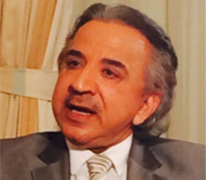Gaza and the War Against Disinformation
The assault on Gaza has highlighted the detrimental role of technology—especially artificial intelligence—in distorting the truth during times of conflict.
- December 05, 2023
On October 7, Hamas carried out a major attack on Israeli towns in the Gaza envelope, killing and capturing hundreds of civilians and military personnel. In retaliation, Israel declared a war of vengeance against Hamas militants in the Gaza Strip. As the battles on the ground have intensified, a parallel "battle of truth" has unfolded in the digital realm.
Since the early days of the war, a flood of fabricated images and videos have circulated across the internet, designed to deceive as many people as possible. The overwhelming volume of this content put a huge burden on media platforms, which were keen to protect their credibility as reliable sources of information, and were left with the critical task of verifying the authenticity of these posts.
The story began when Nicole Zedeck, a journalist in Israel, alleged that Hamas operatives beheaded 40 Israeli children during the October 7 attack. The claim generated widespread sympathy for Israel in the West, especially after President Biden maintained that he had personally seen pictures of these children. However, Western activists and journalists were skeptical of these claims and demanded evidence of the slaughter.
Instead of responding to these demands, Israeli Prime Minister Benjamin Netanyahu released a photo of a single charred body, which he claimed was of an Israeli child burned by Hamas fighters. The picture received millions of views, but an American activist was quick to debunk the image, confirming that it was modified by artificial intelligence and originally was of a dog at a veterinary clinic.
As the attack on Gaza escalated, online misinformation only continued to spread. A notable instance involved the circulation of a picture with Israeli flag-adorned tents; its caption claimed it was a facility equipped to received Israelis displaced by the war. But upon examination, multiple anti-misinformation platforms concluded that it was generated by artificial intelligence, as it contained many distortions and added elements.
Simultaneously, a series of videos were deceptively presented on social media as authentic footage from the ongoing Gaza conflict. But on October 31, the Verify-Sy platform released a report confirming that video clips showing Israeli army tanks targeting the Palestinian resistance were, in fact, adaptations from an online video game called Arma 3.
On November 7, Houthi military media published footage of missile and drones, which it claimed were launched from Yemen towards Israel the previous day. Sidq Yemen, an independent fact-checking platform, assumed the responsibility of verifying the footage. They reported that some of the scenes were of Houthi operations against Saudi and Emirati targets conducted in previous years.
The sheer momentum of this disinformation campaign impacted traditional media coverage of the events, leading to conflicting accounts that negatively affected the public's understanding of the conflict in Gaza. The dissemination of false information was particularly pronounced on X (formerly Twitter), likely due to the weakening of its security standards and its withdrawal from the EU’s Code of Practice on Disinformation earlier this year. Now, the EU has opened an investigation into X under its Digital Services Act (DSA) which requires online platforms to act consistently and quickly to remove hate speech and disinformation.
As many major social media platforms have imposed account verification fees and relaxed their stringent ethical guidelines, the number of fake pages that exploit the verification mark to claim credibility and promote fake news and images has increased. Some influencers have also spread misinformation, exploiting people’s ignorance and inability to access official information.
However, the problem of disinformation can be mitigated through educational initiatives, emphasizing the importance of obtaining news from reliable sources and advocating for the verification of information before sharing it. As UN Secretary General António Guterres affirmed, combating disinformation “requires sustained investment in building societal resilience and acquiring media and information literacy."
Sarah Al-Kbat is a journalist and editor with a master's degree in media.

